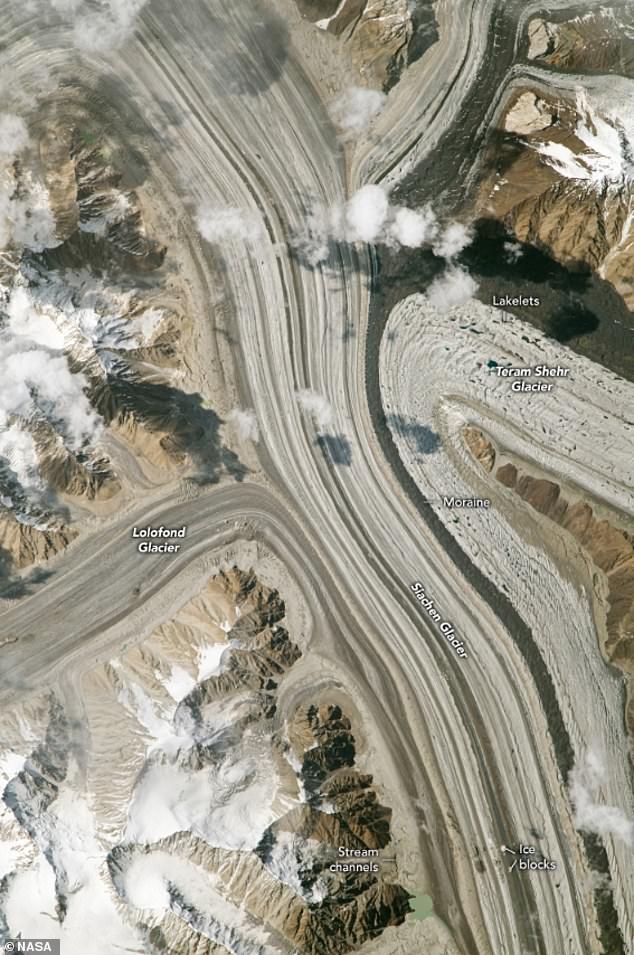
Antarctica’s Doomsday Glacier Discovery Fuels Climate Skeptic Optimism
Surprising Glacier Growth in Karakoram Sparks Climate Debate
A recent NASA satellite image has revealed unexpected ice growth in Asia’s Karakoram mountain range, challenging assumptions about global warming. The Lolofond and Teram Shehr glaciers are merging with the massive Siachen Glacier near the borders of India, Pakistan, China, and Afghanistan. Dubbed the “Karakoram anomaly,” this phenomenon has puzzled scientists since the 1990s, as most glaciers worldwide shrink due to rising temperatures.

NASA’s 2023 image captures the merging glaciers in the Karakoram range.
Contrasting Trends
While over 90% of global glaciers are retreating, the Karakoram region has shown intermittent ice gains. Earlier in 2023, researchers noted similar trends in Antarctica, where ice levels rebounded after decades of decline. These anomalies have fueled climate change skeptics, who argue such findings debunk urgent warnings about global warming. Social media reactions ranged from sarcastic jokes about a “new Ice Age” to claims that climate science is exaggerated.
Scientific Theories
Scientists propose several explanations for the anomaly:
- Weather Patterns: Cooler summers and increased snowfall may offset melting. A 2022 study found winter snowfall in Karakoram rose 10% from 1980–2019.
- Debris Cover: Geologist Kenneth Hewitt suggested rock and dust layers insulate glaciers, slowing melt. However, critics note the anomaly’s recent timing (since the 1990s) conflicts with centuries-old debris accumulation.
- Temporary Relief: A 2023 study warned that rising global temperatures could soon reverse the trend, calling the ice growth a “weakening anomaly.”

Glacier locations in the Karakoram range, a region also known for geopolitical tensions.
Glacier Dynamics
The Siachen Glacier—47 miles long and 2.2 miles wide—is one of the world’s largest outside Greenland and Antarctica. Satellite images show dark “moraines” (rock and dust bands) where glaciers collide, particularly between Teram Shehr and Siachen. These features highlight the glaciers’ slow convergence, though scientists remain divided on the long-term implications.
Broader Climate Context
Experts caution against misinterpreting regional trends. University of Cambridge professor Mike Hulme criticized “climate alarmism” for oversimplifying complex issues but stressed that localized ice growth doesn’t negate global warming. “Climate change isn’t a comet headed for Earth—it’s a layered crisis,” he noted, urging balanced discourse.

Dark moraines mark the merging Teram Shehr and Siachen glaciers.
While the Karakoram anomaly offers a reprieve in a warming world, researchers emphasize it’s a temporary exception, not a reversal of climate change. As studies continue, the region remains a focal point for both scientific inquiry and ideological debates.


